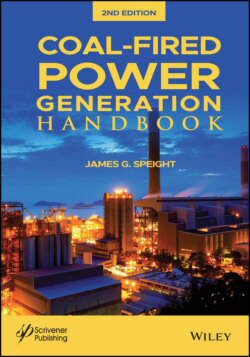Читать книгу Coal-Fired Power Generation Handbook - James Speight G., James G. Speight - Страница 51
3.2.1.1 Strip Mining
ОглавлениеStrip mining is a method of coal recovery in which the coal seam is exposed by removing the overburden (the earth above the coal seam) in long cuts or strips. The soil from the first strip is deposited in an area outside the planned mining area. Spoil from subsequent cuts is deposited as fill in the previous cut after coal has been removed.
Although certain coal deposits can be strip-mined without the use of explosives, some means of breaking the overburden is often necessary. This is usually accomplished by drilling horizontal or vertical blast holes (up to 14 inches in diameter) into the overburden whereupon explosive charges are employed to break the rock fragments for subsequent easy removal. This latter part of the operation can be achieved either by the use of a dragline, power shovel, excavators, bucket wheels, and trucks (Speight, 2013).
The overburden is then removed to a previously mined (and now empty) strip. When all the overburden is removed, the underlying coal seam will be exposed. The exposed coal (usually referred to as a block of coal) may be drilled and blasted (if hard) or otherwise loaded onto trucks or conveyors for transport to the coal preparation (or wash) plant. Once this strip is empty of coal, the process is repeated with a new strip being created next to it. This method is most suitable for areas with flat terrain.
The removed overburden (spoil) may, at some future time, be returned to the mined out areas and, in fact, legislators in the various countries where strip mining is in operation are seriously considering the passage of laws relating to the return of mine spoil to mined out areas so that the land can be restored for future productivity. On the other hand, caution is advised for such ventures since there are also laws which prohibit the “injection” or “burial” of any material that is not indigenous to the particular formations. Whilst mine spoil might be cited as being indigenous to the geologic formation from which it came, the effects of weathering (oxidation) and the interaction with acid materials (acid rain) must be given considerations and the extent of any chemical changes should be determined prior to return to the ground. It only takes one failure, or adverse environmental effect, to doom a concept to extinction.
